Kamakou Preserve, Molokai, Hawaii
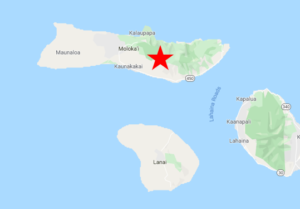
The Kamakou Preserve was the last known home of the Kakawahie, not seen since 1963, the type location of the Black Mamo, last reported in 1907. and also supported the Oloma’o, last confirmed in 1980 (but some subsequent unconfirmed reports). The cloud forest habitat of the Kamakou Preserve is largely intact and could support populations of these species, but the mountains of Molokai are not tall enough to provide refuge from insect-borne diseases such as avian malaria. A visit to Kamakou can still produce Apapane, Common Amakihi, and I’iwi, with Yellow-billed and Red-tailed Tropicbirds along the nearby cliffs.
Orientation
Directions
The Kamakou Preserve is in the highlands of east-central Molokai, about an hour’s drive (18 miles) uphill from Kaunakakai. The first nine miles are paved, the next seven are dirt, and the last two are mud and rock and often impassable.
From Kaunakakai, go west on Highway 460 for four miles, then turn right onto Route 470. After 4.7 miles, at the fork to Pala’au State Park, bear right onto the Forest Reserve Road. Keeping to the main road for 6.7 miles should bring you to the Waikolu Valley Overlook, which is just outside the preserve boundary.
Depending on your vehicle, your confidence as a 4-x-4 driver, and the severity of the conditions, it might be best to park at the overlook and walk the remaining 2.2 miles to the trailhead.
Birdfinding
The Kamakou Preserve protects 2,774 acres of cloud forest at the highest elevations of Molokai, from around 1,100 m up to the Kamakou summit at 1,506 m. Access to the preserve is limited to the 1.5-mile boardwalk Pepe’opae Trail, which passes through wet forest and a bog of stunted trees to arrive at the Pelekunu Valley Overlook at an elevation of approximately 1,300 m.
If the weather is clear, the view across the Pelekunu Valley includes the Olokui Plateau 12 miles to the east, a forbiddingly steep-sided table-top mountain with what is probably the least accessible forest in the Hawaiian Islands—and which might still harbor a lost population of Oloma’o (unlikely but conceivable).
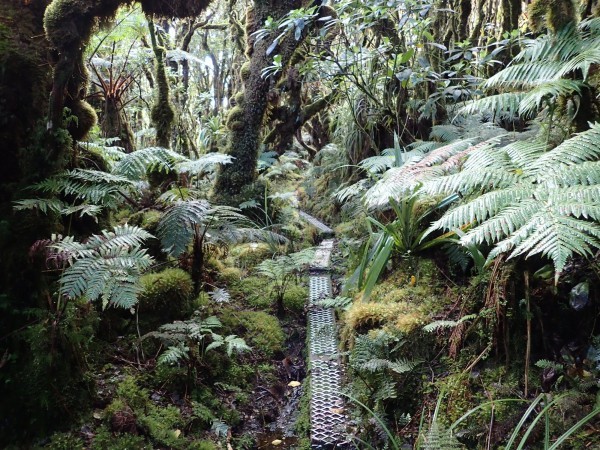
Pepe’opae Trail through wet forest at the Kamakou Preserve, Molokai, Hawaii. © Catherine Toth Fox
The forest at Kamakou appears nearly pristine but unfortunately supports few native birds. The introduced Japanese Bush-Warbler is believed to be most numerous bird in the preserve, though it is much easier to hear than to see.
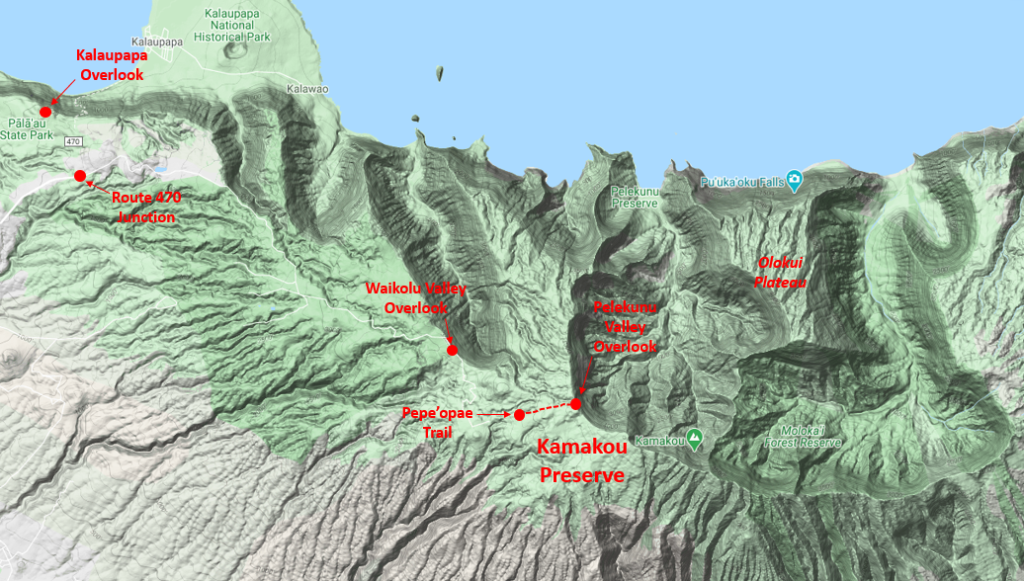
Among the honeycreepers, Apapane is common, Common Amakihi is uncommon, I’iwi is rare, and the Molokai’s two endemics which survived into the 1900s, Kakawahie and Black Mamo, are presumed to be extinct.
The last generally accepted report of Oloma’o in the preserve was of two individuals seen at Pu’u Waha’ula (about 3 miles east and 150 m uphill from the end of the Pepe’opae Trail) in 1979. The last confirmed observation anywhere was of three individuals on the Olokui Plateau in 1980—possibly still the most recent expedition to the plateau. Subsequent Oloma’o sightings have been reported from Kamakou through at least 2005, but these remain uncorroborated.
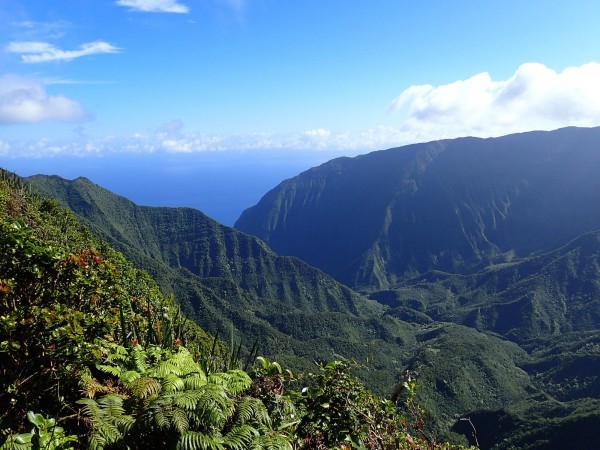
Pelekunu Valley and Olokui Plateau (at right) seen from the overlook at the end of the Pepe’opae Trail in the Kamakou Preserve, Molokai, Hawaii. © Catherine Toth Fox
At the end of the trail, the Pelekunu Valley Overlook is a likely place for distant views of Yellow-billed Tropicbird, which can also be seen along the main road at the Waikolu Valley Overlook.

The Black Mamo, last observed in 1907, was originally collected at Kamakou. John Gerrard Keulemans, 1900
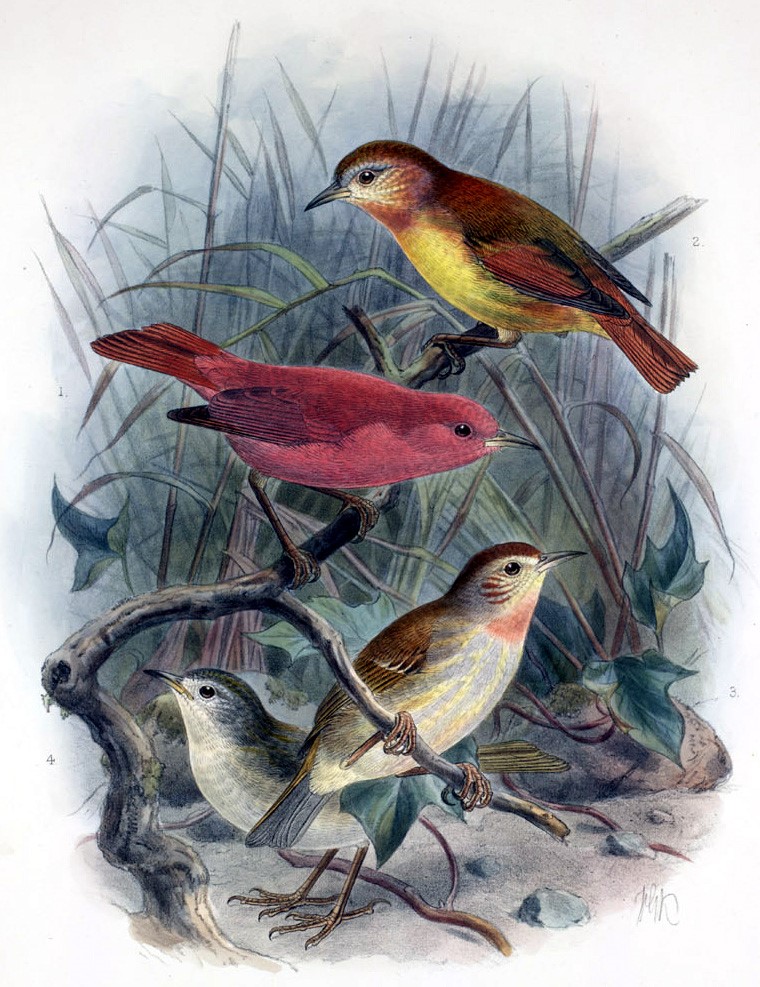
The Kamakou Preserve was probably the final refuge of the Kakawahie, last seen in 1963. John Gerrard Keulemans, 1900
Pala’au State Park. A better vista for seabirds drawn to Molokai’s extraordinary northern cliffs, including both Yellow-billed and Red-tailed Tropicbirds and sometimes Great Frigatebird, is the Kalaupapa Overlook in Pala’au State Park, which is a one-mile detour to the north at the Route 470 junction, 6.7 miles below the Waikolu Valley Overlook. Along the road between Waikolu Valley and Pala’au State Park, watch for Black and Gray Francolins.
Notes
When to Visit
TNC traditionally allows visitors to hike in the preserve without attempting to control access. It also customarily offers monthly hikes on the Pepe’opae Trail. For more information contact TNC’s Molokai field office at (808) 553-5236 or hike_molokai@tnc.org.
Hazards & Hassles
The road from the Waikolu Valley Overlook up to the preserve is treacherous. If visiting the preserve without a guide, it is advisable to park at the overlook and walk the last 2.2 miles.
Links